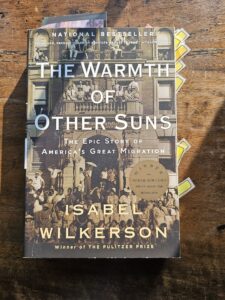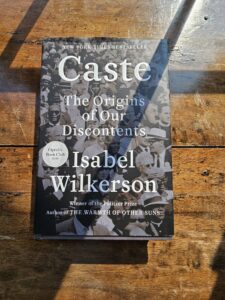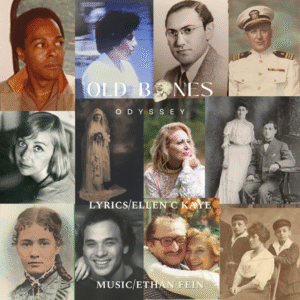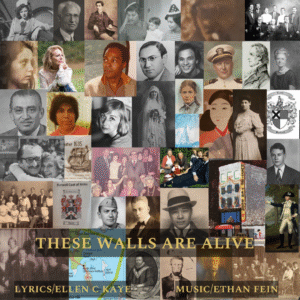
lloyd williams family archive







Insert new script copy including Lloyd
an interview with lloyd williams by ellen kaye
Lloyd Williams – A Bit Of History
In 1950, Lloyd left his home in New Orleans and moved to New York City, attended the Fashion Institute of Technology and entered the world of fashion design, creating his own label, Lloyd Williams International, with clothing in every department store in America, a boutique in Japan, and a high stage fashion show in Shanghai in 1985. Lloyd passed away in New York City in 2020 at the age of 88.
A Little Background On The World Lloyd Williams Was Born Into…
Lloyd Williams was born in New Orleans in 1932. Huey Pierce Long Jr. (“The Kingfish” ) had completed his term as the 40th governor of Louisiana and was on his way to Congress as Louisiana’s newly elected Senator. Long was a populist politician who was responsible for expanding many social programs and public works projects which benefited Louisiana’s poor. Long’s rise in politics saw him become Louisiana’s political boss, impeached in 1929 upon allegations of abuse of power and authoritarian leadership (although never convicted), and the creation of the Share Our Wealth movement – Long’s attempt to stimulate the economy through federal spending initiatives, a wealth tax and redistribution of wealth. Although the movement disbanded shortly after his assassination in 1935, President Roosevelt incorporated many of those proposals in his Second New Deal.
Also known as “The Big Easy” or “NOLA,” New Orleans is the most populous city in Louisiana and the second most populous city in the South behind only Atlanta, Georgia. Known throughout the world for its Mardis Gras celebration, Creole cuisine and jazz music, it is a major tourist destination for visitors worldwide, known for such historic areas as the French Quarter and Bourbon Street..
Originally founded in 1718 by French Colonists, through the efforts of President Thomas Jefferson and his Secretary of State, James Madison, the United States, in the 1803 Louisiana Purchase, bought the territory from Napoleon’s French regime. Although originally founded and settled by France, the area was first occupied by the Chitimacha people, who remain the only Louisiana tribe to still maintain control over some of their original lands. Possession of the area changed hands several times between France and Spain before the US purchased it.
Before being purchased by the US, the main occupants of New Orleans were Native Americans, Creoles (descendants of French and Spanish settlers), Acadians (Canadian exiles) and African enslaved people. After the US purchase, free multi-racial refugees from Haiti, some of whom brought their own enslaved peoples with them, as well as Irish, German, Polish and Italian immigrants also settled in the area.
Louisiana’s history of racism and discrimination dates back to its original colonization by the French when Code Noir, or “Black Code,” was prevalent. Code Noir restricted the lives and activities of enslaved people and freed people of color alike. In 1786, when under Spanish rule, Louisiana adopted the Tignon Law, requiring all black women to wear a tignon headscarf, whether enslaved or not. Other laws restricting what clothing and jewelry they could wear soon followed.
Of course, racism in America was not limited to Louisiana. In fact, slavery was a driving force since the founding of the United States. The United States might never have been if the Three-fifths Compromise had never been reached during the Constitutional Convention in 1787. The Northern and Southern states were deadlocked in attempting to create our representative form of government. The Southern states wanted enslaved men counted in determining the number of representatives each state would be afforded, while the Northern states wanted only freed men counted. The compromise, proposed by Connecticut, was that each state would be afforded two Senators and Representatives to the House of Representatives would be based on the number of freed men in the state plus ⅗ of each enslaved man.
The rights of women were not mentioned in the Constitution until the 19th Amendment granting women the right to vote was passed by Congress in 1919. In order to become part of the Constitution, 36 states needed to ratify the Amendment. Both houses of the Louisiana state legislature refused to ratify the amendment. However, the state House of Representatives voted to amend the state constitution to grant women the right to vote, but the state Senate voted that amendment down as well. In August 1920 Tennessee became the 36th state to ratify the 19th amendment,making the 19th Amendment part of our Constitution. Louisiana did not officially ratify the 19th Amendment until 1970.
In 1811, the largest rebellion of enslaved people occurred in New Orleans when 500 enslaved Africans rebelled in what became known as the German Coast Uprising. The final battle of the War of 1812, known as the Battle of New Orleans, occurred in the area when American troops led by General Andrew Jackson and the pirate, Jean Lafitte, defeated the British. A crucial naval battle occurred in 1862 leading to the capture of New Orleans by Union troops.
The Port of New Orleans was a major hub of America’s slave trade, where goods, supplies and enslaved people were transported and sold. New Orleans was also home to the largest slave market in the country. By 1860, New Orleans was the 6th most populous American city and had the country’s second highest per-capita income. Louisiana became the sixth state to secede from the Union, joining the Confederacy in 1861.
After the Civil War ended, Louisiana was readmitted to the Union in 1868, and, in 1872, P. B. S. Pinchback became the first person of African American descent to serve as governor in the US. Louisiana passed the Thirteenth, Fourteenth and Fifteenth Amendment to its state constitution, abolishing slavery, recognizing African Americans as citizens, and guaranteeing African American men the right to vote. However, once Reconstruction ended, New Orleans, and the rest of Louisiana, experienced the discriminatory impact of Jim Crow laws. White supremacists, like the White League, heavily contributed to the resulting violence against formerly enslaved people, including lynchings statewide. Public facilities were segregated, and many African American descendants became disenfranchised. Literacy laws and poll taxes were implemented to prevent African American descendants from voting. In 1898, a state constitutional amendment was passed containing a “Grandfather Clause” granting the right to vote for only those men whose grandfathers, fathers, or themselves were eligible before the Civil War. Public schools remained segregated until 1960 and those of African descent were prohibited from serving on juries or holding public office. Homer Plessy, a New Orleans free person of color, became the plaintiff in the seminal Supreme Court case, Plessy v. Ferguson, upholding “separate but equal” as constitutional in 1896.
In 1910, Louisiana became the second state to pass a “one drop” statute, mandating that anyone with any trace of Black African ancestry will not be considered white. In 1967, the Supreme Court ruled “one drop” statutes unconstitutional when it decided the case of Loving v. Virginia, ruling that anti-miscegenation laws prohibiting interracial marriages, which traditionally relied on the “one drop” rule, violated the Equal Protection and Due Process Clauses of the Constitution. In 1970, in an attempt to maintain racial discrimination and white supremacy, Louisiana passed the “1/32 law” classifying anyone with 1/32 or more of Black African ancestry as Black. That law was finally repealed on July 5, 1983.
New Orleans Music
New Orleans has a storied place in music history, blending the European, African and Latino American cultures of its diverse inhabitants. Its early music was a unique blend of musical instruments from its Europe inhabitants and the rhythms of its African descendants, eventually leading to the birth of jazz. Cajun, Zydeco, Acadian and Delta Blues also influenced much of the music coming from the New Orleans area, some of which contributed to America’s rhythm and blues and rock and roll revolution. New Orleans has produced many of music’s early pioneers, such as Louis Armstrong, Buddy Bolden, Jelly Roll Morton, Louis Prima, Fats Domino, Allen Toussaint, The Boswell Sisters, Mahalia Jackson, Lizzie Miles, Billie Pierce, Sweet Emma Barrett, Nellie Lutcher, Irma Thomas, and Dr. John, to name a few.
LGBTQ+ History in New Orleans
New Orleans has also been home to the LGBTQplus community for over a century. In 1933, one of the oldest gay bars in the country, Cafe Lafitte, opened, eventually creating Fat Monday Luncheon in 1949, the longest running gay event in America. Beginning in 1958, the Krewe of Yuga formed, linking its traditions to the historic Mardis Gras Carnival, later followed by the Krewe of Petronius in 1961 and the Krewe of Armenius in 1969. Tennessee Williams wrote A Streetcar Named Desire in 1938 in his home in New Orleans and Gay activist groups began to form in the 1970’s. In 1991, the New Orleans City Council passed a gay non-discrimination ordinance, and, in 1997, Louisiana became the first state in the Deep South to pass a hate crime law which included protection for sexual orientation.
Sources and Inspiration:
- New Orleans (Life of a Klansman)
- Repentance & repair
- Hidden Roots Of White Supremacy
- 1619 Project
lloyd william's slideshow
backstory interviews with ellen below
“what inspired you to write These Walls Are Alive?” – An interview with Ellen Kaye
The Hunt Interview with Ellen Kaye


The Warmth Of Other Suns by Isabel Wilkerson
Caste by Isabel Wilkerson
An interview with ellen about Caste & Warmth Of Other Suns

listen to the old bones odyssey original songs below
The songs Old Bones Odyssey and These Walls Are Alive are the main themes of our entire project. They are inspired by the people that fill our stories.






